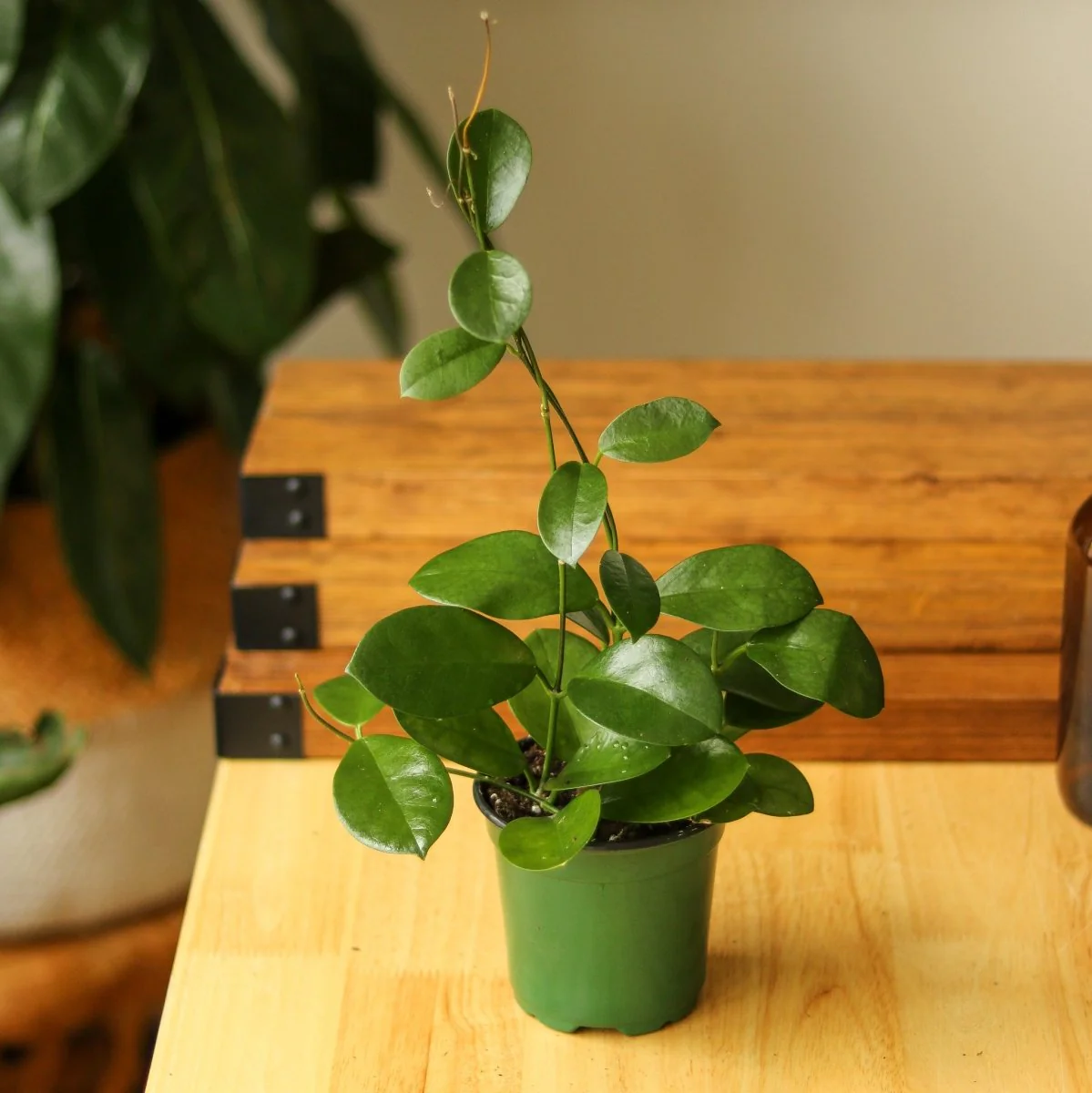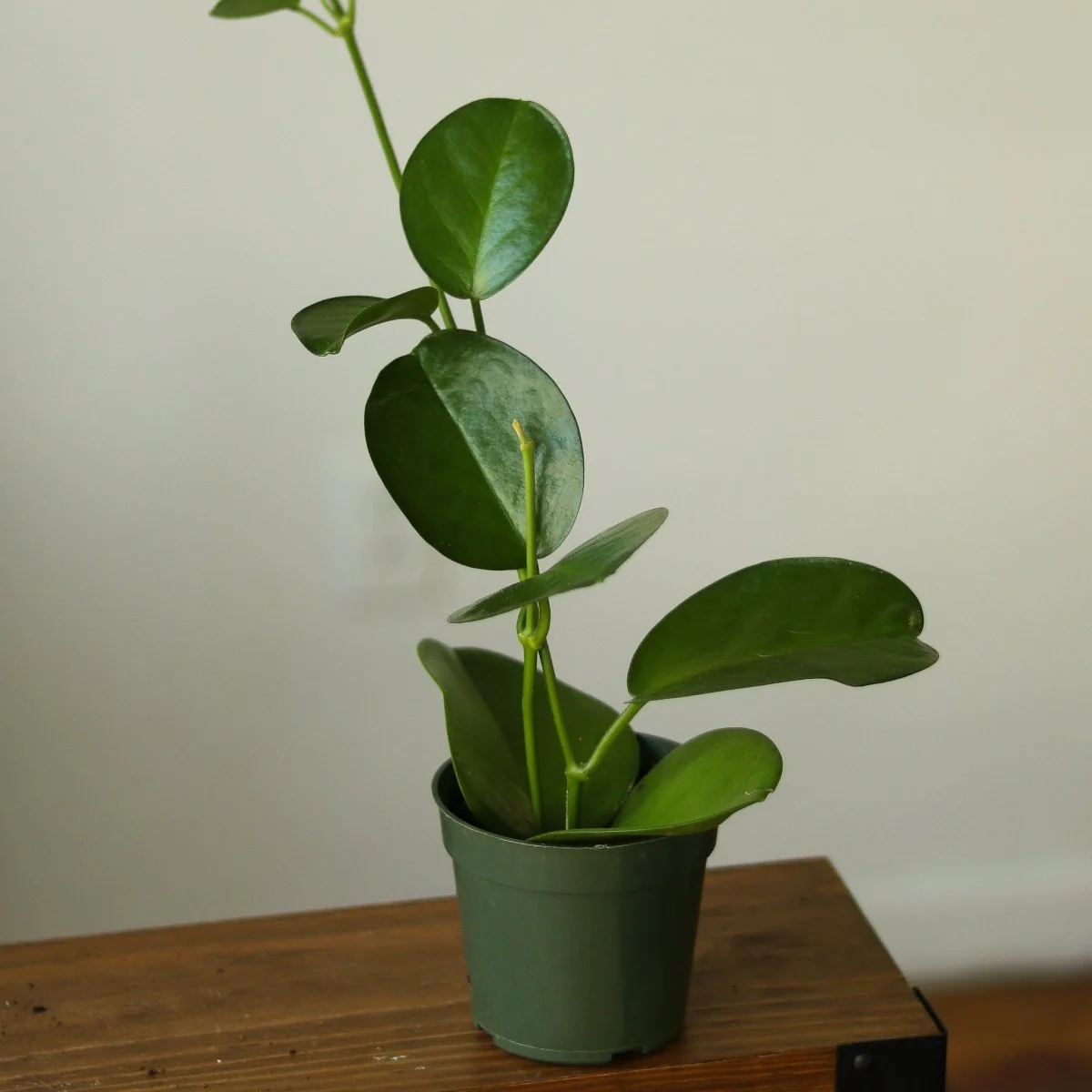Hoya Australis 'Waxvine' - Various Sizes
Quantity
-
Detail
The Hoya Australis 'Waxvine' plant is a easy to grow member of the Hoya family. These plants were first collected by Europeans in 1770 on the northeastern coast of Australia and have the unique ability to attract butterflies when grown outside. It is recognizable by it's waxy green leaves and showy white flowers. This plant appreciates bright, indirect light and needs humidity to thrive.
Waxvine Hoya Plant Profile
- Botanical Name: Hoya Australis
- Common Name: Waxvine, Common Waxflower
- Family: Apocynaceae
- Native Range: Australia
Ed's Care Guide
- Care Level: Moderate
- Light: 6-8 hours of bright, filtered light. Harsh light will burn the foliage.
- Water: Allow top 1-2 inches of soil to dry out between watering; avoid over-watering. Smaller, more frequent watering is often best. This plant is drought tolerant yet if allowed to dry out too much, the waxy leaves will begin to shrivel and yellow; this is a sign to increase your watering schedule. If allowed to stay too moist, this may cause bacteria and root rot to develop.
- Humidity: Average 50-75%;Tolerant of lower levels of humidity
- Temperature: 55–85F
- Pruning: Prune as needed to remove brown or dead leaves and control growth.
- Feeding: Use a general-purpose liquid houseplant fertilizer at half strength once every month during the spring and summer only.
- Propagation: Cuttings
- Growth: Fast-growing compared to other Hoyas. Trailing, vining growth habit will often follow the light and can be trained to grow up a trellis, totem pole or wall for a vertical display. This plant also looks elegant trailing from a hanging basket planter.
- Soil: Use a well-draining, lightweight soil mix, such as commercially available cactus soil.
- Pests: Look out for aphids, spider mites, mealybugs and other scale insects
- Toxicity: Hoya are widely known to be non-toxic to humans and animals
Want To Be An Expert Hoya Grower?
Check out our Hoya care guide for tips from our experts on how to grow the thickest, lushest hoyas.
Looking for houseplants that are safe for your furry friends? Check out our Guide to pet-friendly plants and learn how to create a vibrant, pet-safe space today!






















